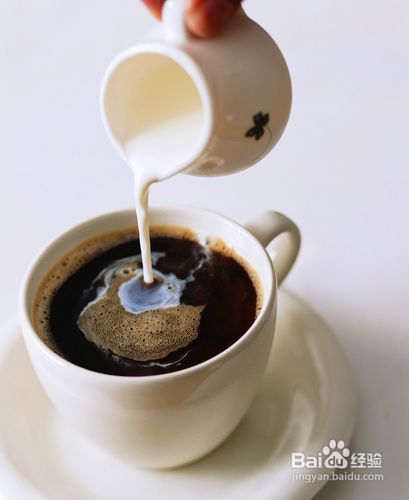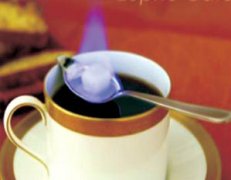A brief introduction to the history and culture of the origin and development of sweet Ethiopian boutique coffee beans

Getachew Mengistie, head of Ethiopia's Intellectual Property Bureau, pointed out pointedly that farmers sell for $1.45 a pound of raw beans, while Starbucks sells for $26 a pound in the United States, an 18-fold spread. The reason is that Ethiopia does not know how to use intellectual property rights to create value for farmers. As long as it is branded as Ethiopian fine beans, it can be marketed in the United States at three times the price of ordinary commercial beans. It is important to know that the downstream channel investment in roasting, packaging and marketing equipment alone cannot create such a large amount of added value, because most of the value comes from the coffee production area (Starbucks would not sell at such a high price if it did not have the name "Sidamo"). He stressed: "Ethiopia is the birthplace of coffee. Of course, famous producing areas have great marketing value, but they are ignored by farmers, resulting in excess profits being finally earned by countries that know how to use the prestige of producing areas to create value."
Ethiopia finally woke up and decided to follow the example of Western developed countries in mastering brand and value-creating skills to benefit hard-working farmers. Therefore, in March 2005, Ethiopia applied to the US Patent and Trademark Office for the rights to the three famous trademarks of Sidamo, Yegashefi and Harar. In the future, American operators selling fine coffee from these three places must first obtain Ethiopian authorization before they can put on the name of origin, so that hard farmers can get more reasonable rewards.
Oxfam estimates that Ethiopia's acquisition of the three origin trademarks will generate additional revenue of $88 million annually, which is not insignificant. Starbucks, however, filed an objection with the U.S. Trademark Office because Starbucks had first applied for the trademark in 2004, although the case was still pending, but the first applicant had the upper hand. Ethiopia's ambassador to the United States approached Starbucks and received a response: "Please speak directly to our lawyers." However, in 2006, the United States Trademark Office approved Ethiopia's trademark rights to "Yegashefi", while the names of Sidamo and Harar are still under consideration. Starbucks hired a large team of lawyers to step up its defense efforts to prevent Ethiopia from taking control of the trademark rights in two other regions.
Ethiopia grows coffee in different climatic zones, so it has more than 140 farm varieties and fresh coffee production all year round. The quality of Ethiopian coffee varies according to different altitudes and geographical ecological environments. Harar coffee from the South-East Highlands is typical mocha coffee with a rich aroma; Wollega coffee from the South-West has a rich fruity aroma;Limu coffee has a grape aroma and spice flavor; Sidamo coffee has a mild, rich aroma and sour fruit flavor; Yirgacheffee coffee has a floral flavor. Taste yega snow fly, chocolate flavor and acidity is more intense, like lemon flying, contains a trance floral.
Ethiopia Yegachol
Coffee is Ethiopia's most important export cash crop and the main source of foreign exchange earnings. Ethiopia's coffee exports account for about 3% of the world market share, making it the eighth largest coffee exporter in the world. Coffee exports increased steadily from 58,000 tons in 1990- 1991 to 110,000 tons in 1995 - 1996 and remained at that level for the next few years. The export volume exceeded 110,000 tons in 2001 - 2002, and reached 127,000 tons in 2002 - 2003. The decade-long decline in coffee prices on the international market has seriously affected Ethiopia's foreign exchange earnings. Coffee exports accounted for more than half of Ethiopia's foreign exchange earnings before coffee prices dropped sharply, but now they account for only about 35 percent. However, coffee prices began to recover in 2002, rising from 41 cents per pound in September 2001 to 52 cents per pound in 2002 and 59.7 cents per pound in 2003, according to the International Coffee Organization. The average price for March 2004 was 60.8 cents per pound, a 50 per cent increase from September 2001. This is great news for Ethiopia.
Ethiopia's Yirgacheffe coffee is one of the most unique coffee beans in the world today: it has a strong floral aroma, lemon aroma, rich acid but soft and pleasant taste.
Some estimate that there are at least 2,000 varieties of Ethiopian coffee, and there are even more than 4,500 varieties. Ethiopian beans appear to be a bit malnourished compared to the fat bodies of Bourbon 'SL28', the dominant variety in Kenya to the south, or the Central and South American and Asian tibeka. But "beans" can not be judged by appearance, Ethiopian coffee citrus aroma can be called the world's best, whether instant coffee or freshly ground coffee, extraction on the smell of orange or lemon fragrance. On the palate, it has a rich floral, fruity and sour aroma that is characteristic of Ethiopia, but the body or consistency is slightly poor. The biggest drawback is that it is easy to bake unevenly, especially sun beans. Even the best Grade3 Harald sun-baked beans often show uneven color, which is the biggest defect of Ethiopian beans, but fortunately it does not affect its good flavor. For coffee fans, don't care how the beans look, the most important thing is to drink. Ethiopian washed beans are much more stable than sun-dried beans, whose flavor fluctuates greatly from year to year, so be sure to cup them several times before buying them in large quantities. Good sun-baked beans have a much deeper flavor than washed beans, but mishandled sun-baked beans are sure to be speechless, as many coffee fans say.
Ethiopia's beans are easy to identify, most of the beans are small and thin pointed long beans, so-called 'longberry', and often mixed with small oval short beans, so-called' shortberry', which look different in size and shape. Commercial bulk beans of Grade4 or Grade5 are mostly mixed with hundreds of different seeds from each region, so the phenomenon of uneven beans is most obvious, and it is difficult to roast evenly. Ethiopian coffee beans are divided into five grades. The first and second stages are water-washed beans. Washed beans Grade1 means 0--3 defective beans per 300 grams of raw beans;Grade2 means 4--12 defective beans per 300 grams. Grade 1 washed beans are extremely rare and generally difficult to buy. At present, all washed beans exported from Ethiopia are Grade2. The quality of sun-cured beans is ranked as Grade3, Grade4 or Grade5. Although Grade4 has significantly fewer defective beans than Grade5, coffee farmers claim that in order to save taxes on exports, they often lower the Grade4 to Grade5 to save money. This may just be marketing, but in fact Grade5 is not as good as Grade 4.
Ethiopia has unique and distinctive flavors, offering a wide range of flavors to customers around the world.
In the southwestern highlands of Ethiopia, the Kaffa, Sheka, Gera, Limu and Yayu Senli coffee ecosystems are considered home to Arabica coffee. These forest ecosystems are also home to a variety of medicinal plants, wildlife and endangered species.
Ethiopia's western highlands have bred new coffee varieties that resist fruit disease or leaf rust. Ethiopia is known for its many coffee types. Some of the major coffee types are known for their unique aromas and flavors, including the following:
Limu Coffee
This coffee is grown at altitudes ranging from 1400 to 2000 meters. This coffee is wet processed and has a strong aroma; the fruit is full and the pH is moderate; the quality is excellent and the spicy flavor is attractive. It is estimated that the average annual production of this coffee is 29000 tons (equivalent to 480,000 bags of 60 kg coffee) out of 49000 hectares of cultivated area.
The grade of sun-dried beans has never been regarded as a good or bad reference standard for a bean, but it is true that sun-dried beans will not be as clean as washed beans, but they have a special smell of the sun, very warm sunshine.
This bean is a friend suggested that I must enter, he said this batch, is not to be missed. After the raw beans arrived, he also ordered them for the first time as a sign of support. Drink to the mouth, exclaim: the original single product Gemma is also so charming! So grateful to him, what a good bean. The raw beans are basically neat in the sun beans from the outside. The baking is a little similar to Harald. The entrance is very "African", wild and a little spicy. The entrance is slightly bitter, but the texture is quite warm. The fruit in the latter part is sweet and delicate, with a strong, comfortable natural sucrose feel.
Even the official Ethiopian research unit cannot say how many Arabicans there are in Ethiopia. Coffee cooperatives on one mountain certainly grow different varieties than those on another, and even small farmers in the same area grow different varieties of coffee.
Like Suzhou's small family jasper, although petite, but gentle and delicate, sweet and pleasant, without any decoration can attract thousands of love. Medium-roasted yeggar coffee has a distinctive lemon, floral and honey-like sweet aroma, soft fruit acids and citrus flavors, fresh and bright taste.
Ethiopia's Yirgacheffe coffee is petite, but gentle and sweet. As the home of coffee, Ethiopia's millennia of growing and processing traditions have resulted in high-quality washed Arabica beans. Light baked with unique lemon, floral and honey sweet aromas, soft fruit acids and citrus notes, fresh and bright taste. No milk, no sugar, let the rich texture and unique soft floral brush your taste buds, leaving endless aftertaste…
Yegashefi is a small town, 700-2100 meters above sea level, synonymous with Ethiopian fine coffee. It is a wetland since ancient times, and the old saying "Yirga" means "settle down" and "Cheffe" means "wetland". The way coffee is produced and the flavor is so prominent that Ethiopian coffee farmers compete to be proud of their coffee with Yegashfi flavor, and become the most famous coffee producing area in Africa.
In Ethiopia, coffee classification and quality control systems are divided into producer, regional and national levels. All coffees are inspected by local inspection agencies before they leave the country of origin, and then re-inspected at coffee inspection and grading centres in Addis and Diredova to determine their quality grade. Grading coffee before auction and sale is important for all groups involved in production, acquisition, export and consumption. Before export, coffee must also be sent to a national quality control agency for inspection to confirm that origin, color, etc. meet export standards to ensure the reputation of Ethiopian coffee
Teenage girls are usually responsible for preparing coffee for everyone in the house. She first grabbed a handful of pale green coffee beans and placed them in a small iron pan on the charcoal stove. She scooped water and washed them with both hands. Then roast the beans with a small wooden spatula. Soon, the beans begin to turn dark and emit an attractive aroma. The girl thought that the heat had arrived, so she picked up the handle of the iron pot to shake the coffee beans with light smoke inside, and sent them to everyone for everyone to smell. After everyone nodded and said, she poured the cooked beans into a small mortar and held a large iron rod nearly one meter long and as thick as a child's arm with both hands to pound. Soon, the handful of beans was crushed to powder.
The girl scraped the powder out bit by bit with a small wooden spoon and poured it into a small-necked, bulging, big-eared earthenware pot. She added clean water and boiled it on a small stove. The water boiled very quickly. After boiling for a while, the fragrance was already overflowing. The girl placed several china cups the size of wine cups on a small wooden box, then filled each cup one by one by lifting the big ear of the coffee pot, then put down the pot and offered one cup to the people sitting around. This process usually lasts 30 minutes
Interestingly, Ethiopians also put pictures of horses on coffee packages to show the purity of coffee. It is said that in those days when horses were the main means of transportation, Ethiopia had the best Arab thoroughbreds in the world. Ethiopians took pride in this. Now they give this pride to Ethiopian coffee."Good coffee should be as pure as thoroughbreds." Because of this concept, the coffee here still tastes so pure today.
Important Notice :
前街咖啡 FrontStreet Coffee has moved to new addredd:
FrontStreet Coffee Address: 315,Donghua East Road,GuangZhou
Tel:020 38364473
- Prev

A brief introduction to the Flavor, Taste and aroma characteristics of Fine Ethiopian Coffee beans
Ethiopia grows coffee in different climatic zones, so it has more than 140 farm varieties, and fresh coffee is produced all the year round. The quality of Ethiopian coffee varies according to different elevations and regional ecological environment. The Harar coffee in the southeast highland is a typical Muha coffee with a strong flavor; the coffee produced in the southwest Wollega has a rich fruity flavor; Limu coffee
- Next

A brief introduction to the Market Price of High-quality Ethiopian Coffee Bean varieties with Multi-level taste
In Ethiopia, the grading and quality control system of coffee is divided into three levels: producer, regional and national. All coffee is inspected by local inspection agencies before leaving the country of origin, and then re-tested at the coffee inspection and grading centers in Addis and Diredawa to determine its quality grade. Coffee is graded before auction and sale, for all involved in production, acquisition,
Related
- Detailed explanation of Jadeite planting Land in Panamanian Jadeite Manor introduction to the grading system of Jadeite competitive bidding, Red bid, Green bid and Rose Summer
- Story of Coffee planting in Brenka region of Costa Rica Stonehenge Manor anaerobic heavy honey treatment of flavor mouth
- What's on the barrel of Blue Mountain Coffee beans?
- Can American coffee also pull flowers? How to use hot American style to pull out a good-looking pattern?
- Can you make a cold extract with coffee beans? What is the right proportion for cold-extracted coffee formula?
- Indonesian PWN Gold Mandrine Coffee Origin Features Flavor How to Chong? Mandolin coffee is American.
- A brief introduction to the flavor characteristics of Brazilian yellow bourbon coffee beans
- What is the effect of different water quality on the flavor of cold-extracted coffee? What kind of water is best for brewing coffee?
- Why do you think of Rose Summer whenever you mention Panamanian coffee?
- Introduction to the characteristics of authentic blue mountain coffee bean producing areas? What is the CIB Coffee Authority in Jamaica?

